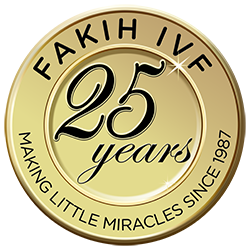Portion control & Holiday season
Wednesday, December 21, 2016
Tune into your body’s own wisdom about what, when and how much to eat…
Portions are spinning out of control. Children eat cookies the size of their face and popcorn from tubs that is the height of their body. Obesity is not only a problem of QUALITY but also of QUANTITY of food we eat.
Portion sizes served to us in restaurants over the last 20 years have increased. For instance, a standard serving of tuna as recommended by the U.S. Department of Agriculture is one-fourth of a pound and 340 calories, but now many outlets sell a tuna sandwich containing approximately 720 calories. Marketing campaigns and cookbooks are also enticing us to consume more.
Is eating a need or a source of pleasure?
Food supplies us with energy and nutrients necessary to respond to our body’s needs, including normal brain and heart functions. We also eat for social reasons, such as during family reunions, friend gatherings and weddings. Special events and occasions are celebrated with symbolic food items such as birthday cakes, chocolate for Valentines and Christmas gingerbread and cookies.
A naturally controlled system:
Under normal circumstances our body sends hunger and satiety signals to help in controlling what, how often and how much to eat. Hunger is usually manifested 2 – 4 hours after a meal, whereby our empty stomach gurgles and sends signals to the brain that we need to eat. Satiety, also called fullness, is reached when the stomach sends a signal to the brain to inform him of fullness. However, these signals can be overrun and instead many people allow the size of their foods’ portions to determine their satiety state.
What can distort our signals?
- Constant dieting may result in numbing of hunger signals and inability to recognize fullness.
- Quality of food plays a critical role in regulating our signals; unbalanced meals will not adequately induce a fullness sensation. Fat is not an immediate source of energy and will not make you full as fast as carbohydrates do. This explains why we overeat when having a high-fat meal or when asking for a second serving of a tasty chocolate cake.
- Rate at which we eat plays a critical role in our feeding sensations. It takes 20 minutes for your stomach to realize it is full. Hence, eating slowly will give enough time for the stomach to signal the brain that you are full and prevent you from overeating.
- Eating while doing another activity, such as reading, watching TV or working on the computer, may distract our attention from eating, leading to over- or under-eating. Studies have shown that people tend to eat more and faster when they are in a noisy place or when loud music is being played.
Reconnecting yourself to your inner signals
- Eating slowly will give you enough time to listen to your signals and prevent you from overeating. Ideally, a meal should take 20 – 45 min.
- Eat mindfully: always eat seated and at the table and never walk around while eating. Observe your food, Smell it and marvel at its deliciousness. Focus your attention fully on your food so you’ll know when you’ve had enough to eat.
- Eat small frequent meals rather than “saving” your appetite for a huge meal and don’t skip meals.
- Start your meal with a salad or soup to help you eat less during mealtime.
- Chew your calories instead of drinking them, since liquids are less satiating than solids; for instance prefer the fruit rather than the juice.
At restaurants:
- Avoid bread starters, limit your carbs (e.g. pasta, rice) and eat mainly protein and vegetables
- “Half is the new whole!” Restaurant entrees can be up to 2,000 calories (not including bread). Share a starter, meal or dessert
- Choose either a starter OR a dessert
At home:
- Use smaller plates, because by serving yourself a large plate of food, you guarantee overeating.
- Avoid supersizing: the much larger drink of soda is 1.24 L (approx.. 410 calories) and the larger fries is nearly 200 g (approx. 610 calories); that’s over 1000 calories in one sitting of just drink and fries. Given that our daily intake is about 2000 calories, it is easy to see why we put on weight. Hence, order the small size and make it last as long as eating the larger portion.
- Challenge yourself to try one or two of these tips for a week and see how it works for you.
Holiday tips:
- Do
 n’t try to lose weight during the holidays. Instead, focus on maintaining your current weight.
n’t try to lose weight during the holidays. Instead, focus on maintaining your current weight. - Do some pre-holiday planning by deciding ahead of time how to handle the different events. For non-festive days, opt for healthy meals and get some exercise.
- Avoid going hungry to parties. Eat a snack before arriving at a party. This will keep you from being overly hungry.
- Make your experience tastier and enjoy your treats in smaller portions rather than “fat-free,” “diet,” “low carb” and “low sugar” items.
- Avoid guilty pleasures, which you can have anytime, such as chocolate or chips and go with seasonal favorites such as fruitcake and Christmas cake.
- Keep Santa’s heart healthy with whole-wheat flour, minimal butter to reduce saturated fat and cholesterol intake, heart-healthy fruits like dried cranberries and berries as well as antioxidant-rich almonds.
- Make popcorn with canola oil instead of butter. Flavor it with spices and paprika (chili powder) instead of cheese and sweeten it with cinnamon or vanilla instead of caramel.
Portion sizes
Measure your portion sizes using your hands
Your hand size is unique to you and relative to your body size. Likewise, a child has a smaller hand size and as such the portion sizes dictated are smaller.
Measure your portions using the following guide:
Proteins = 1 open palm (animal sources: meat, fish, eggs, dairy; vegetable sources: beans, legumes, nuts, seeds)
Vegetables or fruits = 1 closed fist
Grains = 1 cupped hand
Healthy fats = 1 thumb (cold pressed oils, avocado, butter or ghee, coconut milk)
Per meal
1 palm protein
2 fists vegetables
1 cupped hand of grains
1-2 thumbs healthy fats

Recipes
Fruit and Nut Ice Cream Pudding
Makes 6-8 Servings
Preparation Time: 15 min
Ingredients
- ¾ cup almonds (toasted, chopped)
- 2 cups dried fruit
- 1.5 L vanilla yogurt
- 1 ½ teaspoons mixed spices
- 60 mL apple juice
Optional: Slithered almonds (for decoration)
Method
- Place fruit in a large mixing bowl, pour apple juice over fruit and leave for 2 hours. Add almonds and mixed spices
- Fold together with yogurt
- Line a 6-8 cup pudding basin with plastic wrap
- Spoon in mixture
- Cover with plastic wrap and freeze overnight
- Cut into cake-sized slices and serve in dessert bowls with a sprinkle of slithered almonds
Gluten free banana bread
Makes 1 loaf; 12 Servings
Preparation time: 20 min
Ingredients
400 g ripe banana
6 medium eggs
4 fresh-pitted dates
2 teaspoons vanilla extract
60 mL canola oil
½ teaspoon ground cinnamon
2 teaspoons gluten free baking powder
70 g coconut flour
20 g chia seeds or flaxseeds
Method
- Preheat the oven to 150˚C
- Grease one loaf tin and then line with baking paper
- Combine all ingredients, except the coconut flour and chia seeds, into a blender or food processor and blend until creamy mixture
- Add coconut flour and chia seeds and mix, though being careful not to over mix
- Allow mixture to rest for 10 minutes so the chia and coconut flour can expand
- Spoon batter into the tin and sprinkle the top with extra cinnamon
- Bake for 50 – 55 minutes
- Check if it is ready by placing a skewer into the center. It should come out dry
- Remove from the oven and allow to cool before turning out the loaf
 By Ms. Ayla Coussa
By Ms. Ayla Coussa
Clinical Dietitian









